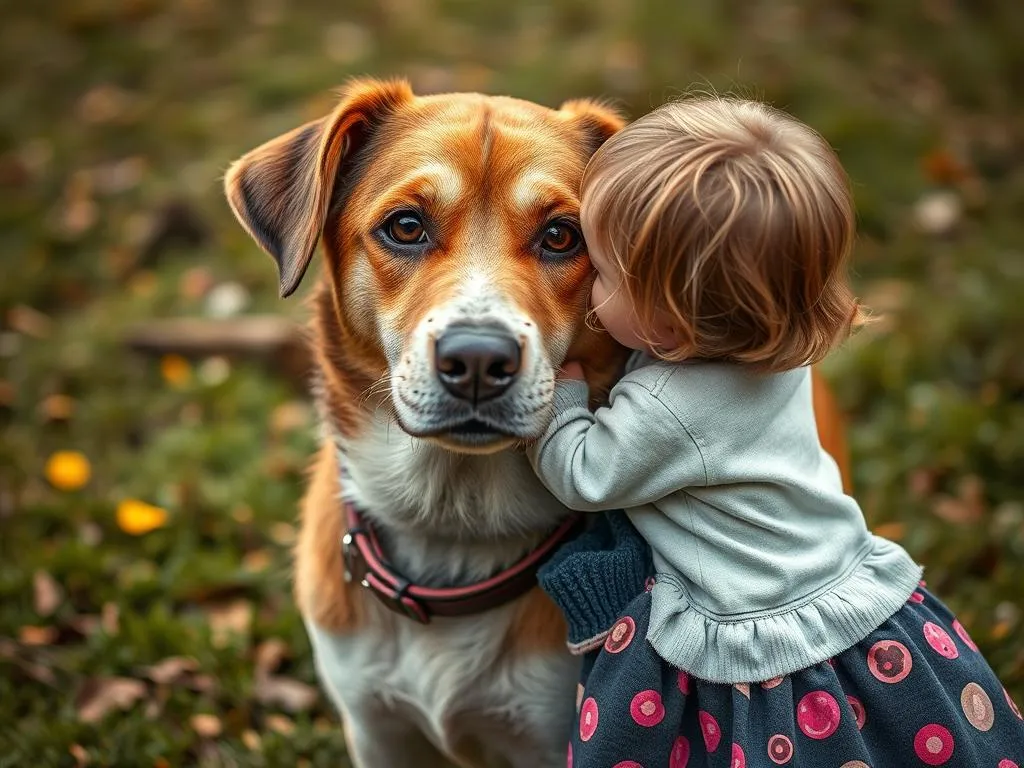
Creating a harmonious environment where dogs and children coexist safely is paramount for any pet owner. Various statistics highlight the importance of this topic, with reports indicating that thousands of children visit emergency rooms each year due to dog-related injuries. This underscores the necessity of teaching dogs to respect children, which not only protects kids but also fosters a positive relationship between the two. Establishing boundaries and nurturing constructive interactions can lead to a peaceful household where both dogs and children thrive.
Understanding Dog Behavior
The Canine Mindset
To effectively teach a dog to respect a child, it’s crucial to understand the canine mindset. Dogs perceive their environment through a unique lens, influenced by their instincts and pack mentality. They thrive in social structures, often establishing a hierarchy among other dogs and humans. Early socialization plays a vital role in shaping a dog’s behavior, allowing them to interact positively with various people, including children.
Common Dog Behaviors Around Children
Dogs exhibit a range of behaviors around children, from playful antics to signs of aggression. Understanding the difference between playful behaviors and aggressive tendencies is essential for any dog owner. Dogs may show signs of discomfort or anxiety, such as growling, barking, or withdrawing when around children. Therefore, it’s crucial to read dog body language effectively to identify when a dog feels overwhelmed or threatened.
The Importance of Respect
Why Respect Matters
Teaching a dog to respect a child is not just a matter of politeness; it has significant safety implications for both parties. A respectful relationship minimizes the risk of bites or aggressive encounters, ensuring that children can safely interact with their canine companions. Moreover, fostering respect builds a foundation for a positive relationship, leading to long-term benefits for both the child and the dog, including deeper bonds and a more enjoyable living environment.
Teaching Boundaries
Boundaries are critical in dog training. Dogs need to know what behaviors are acceptable and what are not. Consistency in reinforcing these boundaries is key to teaching respect. For instance, if a dog jumps on a child, it’s essential to redirect this behavior immediately, reinforcing the idea that jumping is unacceptable.
Preparing for Training
Assessing the Dog’s Behavior
Before embarking on a training journey, it’s vital to assess the dog’s behavior around children. Observing how the dog reacts to various situations can help identify triggers for aggressive or unwanted behaviors. If a dog displays consistent signs of aggression or anxiety, consulting a professional trainer or behaviorist may be necessary.
Setting Up a Safe Environment
Creating a safe environment is a critical step in ensuring positive interactions between dogs and children. Designating specific areas where the dog can retreat when feeling overwhelmed allows for a healthier relationship. Additionally, it’s essential to educate children about dog boundaries, teaching them to respect the dog’s personal space and signals.
Training Techniques
Positive Reinforcement
One of the most effective methods for teaching dogs to respect children is through positive reinforcement. This technique involves rewarding desirable behaviors with treats, praise, or playtime. For instance, when a dog remains calm around a child, offering a treat reinforces that behavior. Common commands that can be taught include “sit,” “stay,” and “leave it,” which can help manage a dog’s behavior in the presence of children.
Teaching Commands for Respect
Commands specifically designed to promote respect can be immensely helpful. Teaching commands such as “gentle” or “off” can communicate to the dog what is expected in various situations. Here’s a step-by-step guide to teaching these commands:
-
Gentle: Hold a treat in your hand. When the dog approaches, say “gentle” and allow them to take the treat softly. If they attempt to snatch it, withdraw it and try again.
-
Off: Use this command to teach the dog to get down when they jump on furniture or a child. When they jump, say “off” and guide them down gently. Reward them once all four paws are on the ground.
Consistency and repetition are vital when teaching these commands, as dogs thrive on routine.
Supervised Interactions
Supervised interactions between dogs and children are crucial for ensuring safety and fostering a positive relationship. During playtime, parents should guide children on how to approach dogs calmly, avoiding sudden movements that might startle the pet. Recognizing when to intervene during play is also essential; if the dog shows signs of discomfort, it’s vital to step in and redirect the interaction.
Addressing Behavioral Issues
Common Issues and Solutions
Dogs may exhibit various behavioral issues around children. Here are a few common ones and potential solutions:
-
Barking or Growling: If a dog barks or growls at a child, it’s essential to assess the situation. Identifying what triggers this behavior can help in addressing it. Redirecting the dog’s attention with a toy or treat can be effective.
-
Jumping or Overly Excited Behavior: Calmness is key. Teaching the “sit” command and practicing it when children are around can help manage excitement levels.
-
Resource Guarding: If a dog guards toys or food, it’s crucial to teach them that sharing is beneficial. Gradually introducing children to the dog’s toys while providing positive reinforcement can help alleviate this behavior.
When to Seek Professional Help
If a dog displays persistent behavioral issues despite training efforts, it may be time to seek professional help. Signs that training is not progressing include consistent aggression, fearfulness, or anxiety around children. Hiring a professional dog trainer or behaviorist can provide tailored strategies and insights. Different training methods, such as positive reinforcement or clicker training, can be explored to find what works best for the dog.
Building a Lasting Relationship
Ongoing Training and Socialization
Training doesn’t end once a dog has learned basic commands; it’s an ongoing process. Continual training reinforces positive behaviors and helps maintain respect in the relationship. Owners should also seek opportunities for socialization, allowing dogs to interact with children and other pets in controlled environments. Engaging in enrichment activities, such as agility courses or obedience classes, can further promote bonding and respect between dogs and children.
Teaching Children How to Interact with Dogs
Educating children on proper dog etiquette is equally important. Teaching children to respect a dog’s space, avoid pulling on ears or tails, and understand when a dog wants to be left alone can foster a safer environment. Interactive games that involve gentle play or commands can also encourage positive interactions while teaching children about dog behavior.
Conclusion
In conclusion, teaching a dog to respect a child is a multifaceted journey that involves understanding dog behavior, setting boundaries, and employing effective training techniques. By prioritizing safety and fostering a positive relationship, dog owners can create an environment where both dogs and children thrive. Investing time and effort into this training will yield rewarding results, ensuring a harmonious household where respect and love flourish between canine companions and the children they adore.







